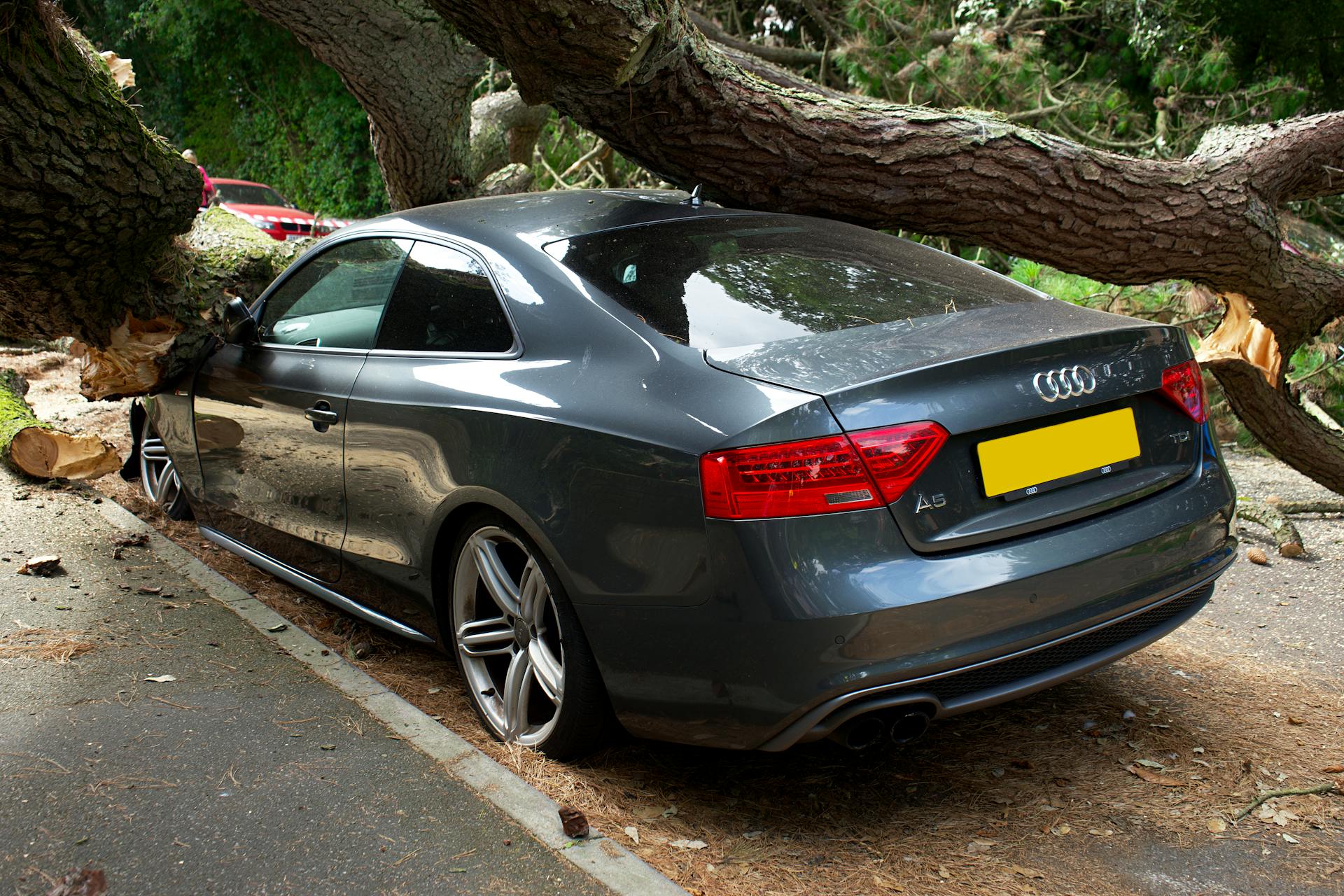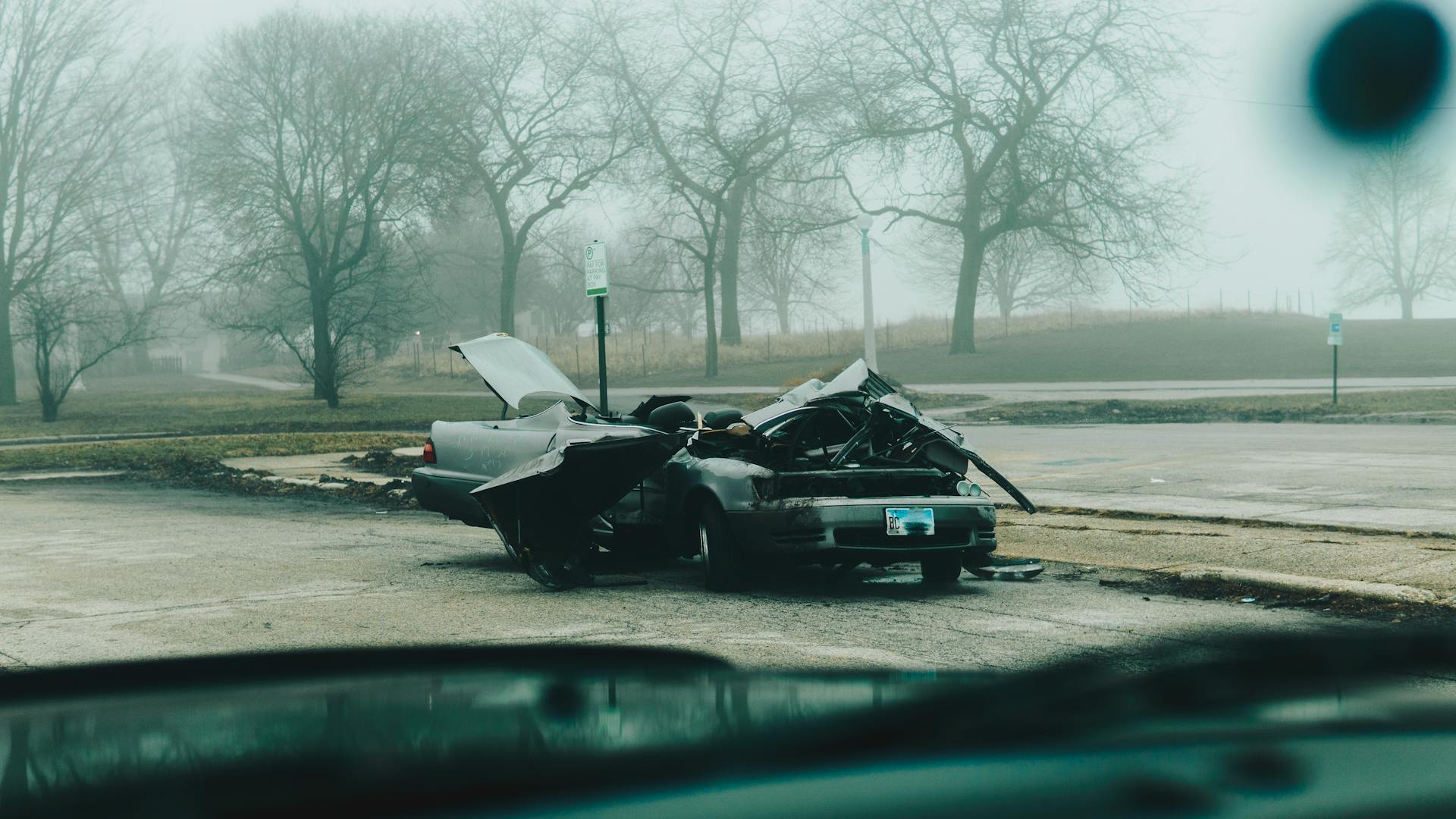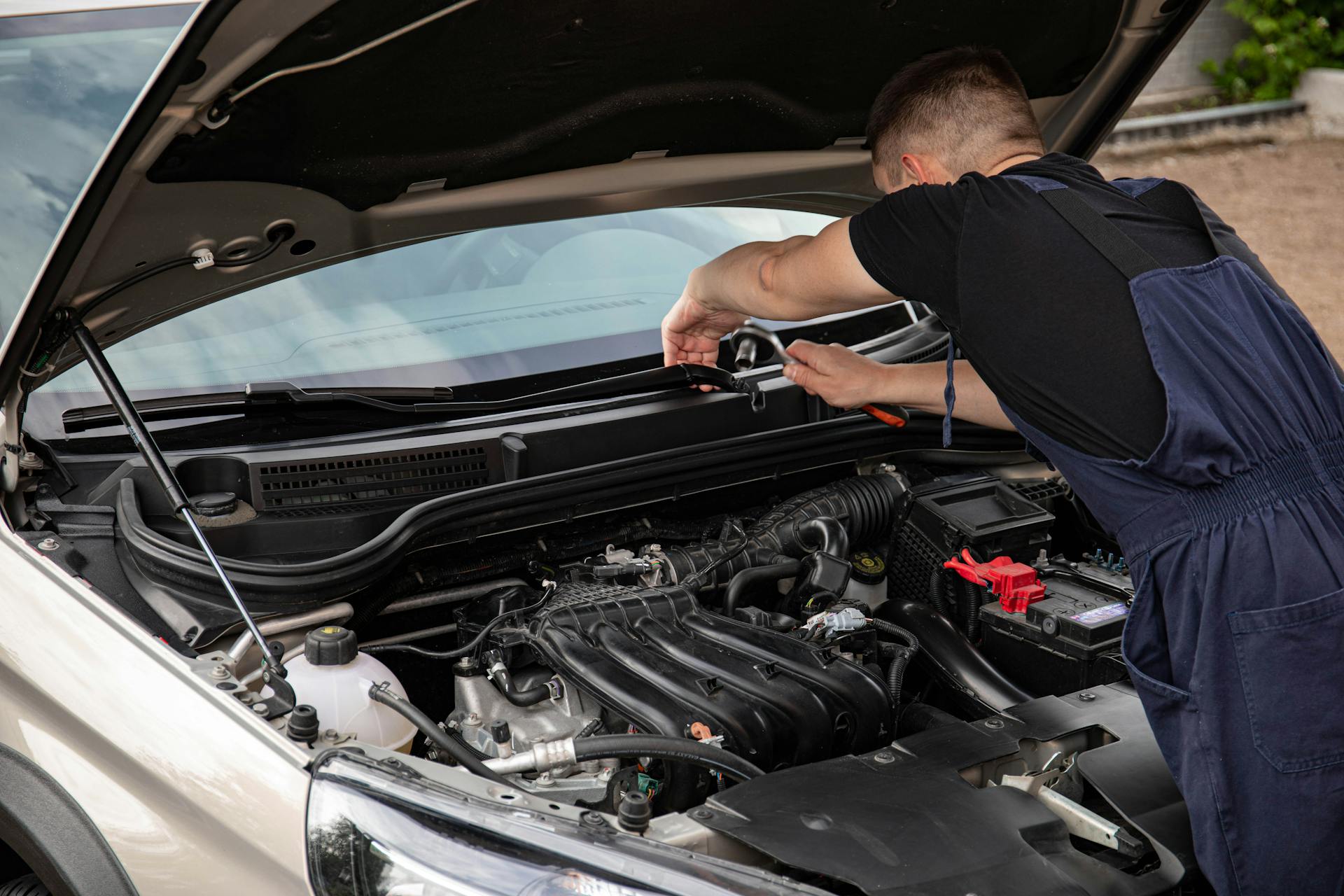
Most car insurance policies don't cover maintenance and wear and tear, but they may cover repairs due to accidents or other unforeseen events.
Typically, car insurance policies have a clause that excludes maintenance and wear and tear from their coverage. This means you'll need to budget for routine maintenance costs like oil changes, tire rotations, and brake replacements.
Maintenance and wear and tear can add up quickly, with some estimates suggesting annual costs of $1,000 or more for a single vehicle.
What is Covered
Mechanical breakdown insurance, or MBI, covers a range of essential components in your vehicle, including engine parts, new brakes, and the transmission.
MBI typically includes coverage for repairs to the cooling system, fuel system, and steering components. It may also cover the cost of replacing the alternator and air conditioning.
In most cases, MBI will cover engine failure, which can be a costly repair. Some insurance companies offer this type of insurance as an endorsement to an existing car insurance policy or as a standalone policy.
Here's a breakdown of what's typically covered under MBI:
- New brakes
- Engine parts
- New transmission
- Alternator replacement
- Cooling system
- Fuel system
- Steering components
- Air conditioning
Conditions for Coverage
A deductible is the amount you pay out of pocket before your insurance coverage kicks in to cover the rest.
Deductibles can vary widely depending on your policy and coverage type, and choosing a higher deductible generally lowers your premium costs.
You must pay the deductible first when you make a claim for repairs, and only after meeting this deductible does your insurance company cover the remaining repair costs up to your policy limit.
Wear and Tear
Insurance companies won't cover wear and tear of your vehicle, which requires regular maintenance over time.
You're responsible for repairing or replacing parts that wear out, such as windshield wipers, filters, tires, brake pads, belts, and other parts.
Typical wear and tear costs are usually paid out of pocket.
Car insurance may not cover mechanical failures, faulty repairs, maintenance service, or rust damage.
Here are some examples of wear and tear that aren't covered by auto insurance:
- Mechanical failures
- Faulty repairs
- Maintenance service
- Rust damage
These are just a few things to keep in mind when it comes to wear and tear on your vehicle.
Conditions for Coverage

Understanding the conditions for coverage is crucial to managing your car insurance expenses.
Deductibles are a significant part of these conditions, and they can vary widely depending on your policy and coverage type.
A deductible is the amount you pay out of pocket before your insurance coverage kicks in.
Higher deductibles generally lower your premium costs, but they mean paying more upfront for repairs after an incident.
You pay the deductible when you make a claim for repairs, and only after meeting this deductible does your insurance company cover the remaining repair costs up to your policy limit.
Preexisting damages are also a condition to consider, but unfortunately, there's no specific information provided on this topic in the given article sections.
Filing a Claim
Filing a claim can be a straightforward process if you know what to expect. The first step is to file a claim for repairs after unexpected damage occurs to your vehicle.
To make the repair process smoother and faster, it's essential to know the steps involved in filing a claim. This includes the inspection and documentation process, which will help the insurance company review your claim.
The insurance company will review your claim after the inspection and documentation process. If the claim is approved, they will confirm the amount they will cover for the repairs based on your policy's terms and conditions.
The method of payment will be specified in your policy details, and it can vary between insurance companies. Some pay the vehicle repair shops directly, while others reimburse you after you've paid for the repairs.
Sources
- https://khattarlaw.com/insurance-cover-non-accident-repairs/
- https://www.autorepairindy.com/blog/what-you-need-to-know-about-car-repair-insurance/
- https://www.bankrate.com/insurance/car/engine-failure/
- https://www.progressive.com/answers/car-insurance-mechanical-problems/
- https://www.mercuryinsurance.com/resources/basics-101/does-car-insurance-cover-repairs.html
Featured Images: pexels.com


